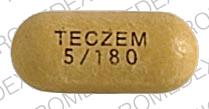Diltiazem/enalapril and Alcohol/Food Interactions
There are 2 alcohol/food/lifestyle interactions with diltiazem / enalapril.
Enalapril Food
Moderate Food Interaction
Consumer information for this interaction is not currently available.
GENERALLY AVOID: Moderate-to-high dietary intake of potassium can cause hyperkalemia in some patients who are using angiotensin converting enzyme (ACE) inhibitors. In some cases, affected patients were using a potassium-rich salt substitute. ACE inhibitors can promote hyperkalemia through inhibition of the renin-aldosterone-angiotensin (RAA) system.
MANAGEMENT: It is recommended that patients who are taking ACE inhibitors be advised to avoid moderately high or high potassium dietary intake. Particular attention should be paid to the potassium content of salt substitutes.
Diltiazem Food
Moderate Food Interaction
Consumer information for this interaction is not currently available.
MONITOR: Like many CNS-active agents, alcohol can exhibit hypotensive effects. Coadministration with antihypertensive agents including diltiazem may result in additive effects on blood pressure and orthostasis.
MONITOR: Grapefruit juice may increase the plasma concentrations of orally administered diltiazem in some patients. The proposed mechanism is inhibition of CYP450 3A4-mediated first-pass metabolism in the gut wall by certain compounds present in grapefruit. In a study of ten healthy male volunteers, administration of a single 120 mg oral dose of immediate-release diltiazem in combination with 250 mL of grapefruit juice increased the diltiazem peak plasma concentration (Cmax) and systemic exposure (AUC) by an average of 22% and 20%, respectively, compared to administration with water. The time to reach Cmax (Tmax) and the terminal half-life were not affected, and no statistically significant differences in blood pressure and heart rate were observed during administration with grapefruit juice relative to water. In a different study, repeated administration of 200 mL of grapefruit juice at 0, 2, 4, 8 and 12 hours had no significant effect on the Cmax or AUC of a single 120 mg oral dose of diltiazem, but increased its half-life from 4.1 to 5.1 hours. The ratios for the N-demethyl and deacetyl metabolites to diltiazem were also not affected by grapefruit juice. However, because pharmacokinetic interactions involving grapefruit juice are often subject to a high degree of interpatient variability, the extent to which a given patient may be affected is difficult to predict.
MANAGEMENT: Patients should be advised that alcohol may potentiate the hypotensive effects of diltiazem, especially during the initiation of therapy and following a dosage increase. Caution should be exercised when rising from a sitting or recumbent position, and patients should notify their physician if they experience dizziness, lightheadedness, syncope, orthostasis, or tachycardia. Patients who regularly consume grapefruit or grapefruit juice should be monitored for increased adverse effects of diltiazem such as such as headache, irregular heartbeat, edema, unexplained weight gain, and chest pain. Grapefruit and grapefruit juice should be avoided if an interaction is suspected.
Switch to professional interaction data
Diltiazem/enalapril drug interactions
There are 850 drug interactions with diltiazem / enalapril.
Diltiazem/enalapril disease interactions
There are 16 disease interactions with diltiazem / enalapril which include:
- angioedema
- bone marrow suppression
- hemodialysis
- hyperkalemia
- hypotension
- aortic stenosis
- bradyarrhythmia/AV block
- cardiogenic shock/hypotension
- coronary artery disease
- liver disease
- CHF/AMI
- accessory AV tracts
- ventricular tachycardia
- liver disease
- renal dysfunction
- renal dysfunction
More about diltiazem / enalapril
- Check interactions
- Compare alternatives
- Reviews (1)
- Side effects
- Dosage information
- During pregnancy
- Drug class: ACE inhibitors with calcium channel blocking agents
Related treatment guides
Drug Interaction Classification
| Highly clinically significant. Avoid combinations; the risk of the interaction outweighs the benefit. | |
| Moderately clinically significant. Usually avoid combinations; use it only under special circumstances. | |
| Minimally clinically significant. Minimize risk; assess risk and consider an alternative drug, take steps to circumvent the interaction risk and/or institute a monitoring plan. | |
| No interaction information available. |
Further information
Always consult your healthcare provider to ensure the information displayed on this page applies to your personal circumstances.


